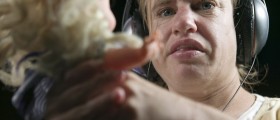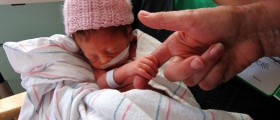
Even though dyslexia has beenconsidered to be a serious learning disorder since 1968, it waspresent in human beings since time immemorial. By definition,dyslexia is a disorder which the World Federation of Neurologistscharacterizes as a disorder found in children who fail to attain thelanguage skills or reading, writing and spelling. Namely, theirskills do not match their level of intelligence.
Dyslexia often goes undetected duringthe first years of child's life. However, as the educationalprocesses start to appear in the child's life, dyslexia shows itsface and results in numerous learning problems which are mainlyrelated to the learning of reading, writing and spelling.
Dyslexia Common Problems
Dyslexic children mostly have problemsrelated to differentiating sounds or phonemes from one another. Also,they cannot assign these phonemes to specific sounds and combine themforming letters and words. So, dyslexic people may find it impossibleto differentiate written words “pat” and “bat”, even thoughthey have no problems relating these words to their real-lifeequivalents.
Yet, the severity of this condition mayvary from mild to severe and the sooner it gets diagnosed andtreated, the greater the chances of complete recovery are. Eitherway, dyslexia is not related to one's levels of intelligent andpeople who suffer from dyslexia are not mentally impaired. Also,hearing or vision problems are not related to dyslexia. Rather, themain problem related to this condition lies in the brain's disabilitytranslate the images it receives from the eyes and ears, beingnecessary for transforming the words into meaning.
There are several different types ofdyslexia, all of which can affect a child's capability to spell andread. One of these is “trauma dyslexia” which affects anindividual after he/she has been injured in the brain area in chargeof language. However, this form of injury rarely appears in children.
Secondly, there is another type ofdyslexia called “primary dyslexia” which does not stem fromdamage to the brain but, rather from a dysfunction present in theleft side of the brain, the cerebral cortex. This form of dyslexiadoes not change with age and people who suffer from it rarely manageto surpass reading and writing skills of a fourth-grader, regardlessof their age. Primary dyslexia is more common in boys than in girlsand is transferred genetically.
Finally, there is “secondary” or“developmental” dyslexia, triggered by the hormonal changes inthe organism, appearing in the early stages of the child'sdevelopment.
Dyslexia of any type can be named morespecifically, depending on the language skill it affects. Basically,visual dyslexia makes a person write words and numbers in a reversedorder than he/she is supposed to. Next, auditory dyslexia makes ithard for one to recognize groups of sounds or individual sounds,making the jumbled during pronunciation and failing to hear themproperly. Dysgraphia, however, is a type of dyslexia which manifeststhrough writing difficulties since the affected child cannot hold thepen or the pencil correctly or control it properly. In general,children suffering from dyslexia are known to have ugly handwriting.
Dyslexia in Adults
As it was mentioned above, earlyintervention for dyslexia can make all the difference when it comesto the treatment of this problem. Yet, this does not have to be anexclusive rule. Often, in cases where dyslexia gets by unnoticed oruntreated during childhood, it remains present in the adult stage ofa person's life. Usually, people mistakenly believe that many of thedyslexic children who do not learn how to read and write properly bythe age of 11 have some intellectual problems or lack adequatelearning motivation. Therefore, they get misdiagnosed and mistreated,this making it possible for dyslexia to remain present in their livesforever.
If dyslexia appears during adulthood,due to brain injury, the individuals who receive adequate and timelytreatment often manage to deal with the symptoms of this conditionand overcome them. However, taking into consideration that the humanbrain is more elastic during young age, it can re-wire thedyslexia-related problems on its own more easily. Nevertheless,numerous health experts claim that the elasticity of the brainremains prevalent even during older age, making it possible fordyslexia to be treated whenever it appears.
Some of the most common issues thatdyslexia triggers in adults are difficulty regarding concentrating,restlessness, poor memory skills, especially when it comes tomemorizing something that one has just read, slow reading, problemswith remembering instructions, poor daily schedule organization andtime management issues and difficulties related to generalunderstanding of the lines read.
Therefore, adults with dyslexia mayfind it harder to overcome this learning problem than youngerindividuals with the same problem. Yet, not everything is lost. Keepin mind that every single dyslexic is a unique person with a uniqueproblem and all these problems can be dealt with through appropriateapproaches. Stay resilient and persistent and seek adequate medicalassistance on time.

















Your thoughts on this
Loading...